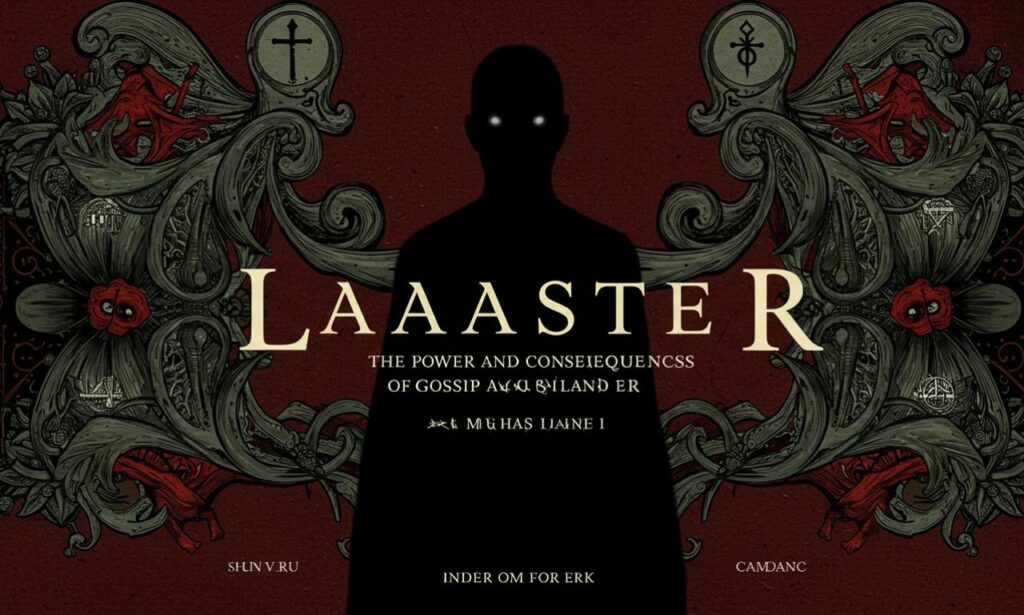In nearly every society, language holds the power to build, heal, destroy, or divide. One word that captures the destructive side of communication is “laaster“—a term that often refers to gossip, slander, or the act of speaking ill about others behind their backs. Though it may seem harmless on the surface, laaster can have serious social, emotional, and even legal consequences.
This article explores the origins, meanings, uses, and cultural impact of laaster, as well as how to recognize and rise above it in personal and professional life.
What Does “Laaster” Mean?
The word laaster is rooted in several languages, including Dutch, Afrikaans, and Germanic dialects, generally translating to slander or malicious gossip. In essence, it refers to spreading false, harmful, or degrading statements about someone—usually without their knowledge or the opportunity to respond.
Key Characteristics of Laaster:
-
Spoken behind someone’s back
-
Often based on rumors or half-truths
-
Aimed at damaging a person’s reputation
-
Can be intentional or unconscious
Cultural and Religious Views on Laaster
Many cultures and religions take a firm stance against laaster. It is often viewed not just as bad manners, but as morally or spiritually wrong.
In Religious Contexts:
-
Christianity: The Bible warns against bearing false witness and condemns slander as a sin.
-
Islam: Backbiting (ghibah) is strongly discouraged and considered a major offense.
-
Judaism: Lashon hara (evil tongue) refers to speech that is harmful or defamatory, even if true.
In all these faiths, laaster is viewed as harmful not just to the victim but to the speaker’s character.
The Psychological Impact of Laaster
Laa-ster can have serious emotional and psychological consequences, both for the person being targeted and the person engaging in it.
On the Victim:
-
Loss of reputation and trust
-
Anxiety or depression
-
Damaged relationships
On the Speaker:
-
Erosion of credibility
-
Isolation from others who value integrity
-
Potential guilt or regret
The negative ripple effect of laaster can extend to workplaces, families, schools, and communities.
Laaster in the Workplace and Public Life
In professional environments, laa-ster can create toxic cultures and reduce productivity. When team members feel unsafe or undermined by rumors or whispers, collaboration suffers.
Consequences in the Workplace:
-
Legal risks (e.g., defamation lawsuits)
-
Loss of employee morale
-
Turnover and absenteeism
Employers often implement anti-gossip policies and encourage open communication to prevent laa-ster from spreading in the office.
Legal Perspectives on Laaster
Depending on the jurisdiction, laa-ster may have legal implications. Slander (spoken) and libel (written) are types of defamation that can be prosecuted if proven false and harmful.
Legal Criteria for Laaster:
-
The statement must be false
-
The statement must be published or communicated to others
-
It must cause harm to reputation or livelihood
In some countries, defamation laws are strict, and even seemingly casual speech can result in fines or criminal charges.
How to Avoid Engaging in Laaster
Avoiding laa-ster means choosing conscious, kind, and constructive communication—even in emotionally charged situations.
Tips to Steer Clear of Laaster:
-
Ask yourself: Is this true? Is it necessary? Is it kind?
-
Avoid spreading unverified information
-
Speak directly to the person involved, not behind their back
-
Set an example by refusing to engage in negative talk
Practicing empathy and active listening can also help reduce the impulse to vent or judge.
What to Do If You’re a Victim of Laaster
If you find yourself targeted by laaster, don’t ignore it—take thoughtful action to protect yourself and your reputation.
Steps to Take:
-
Document incidents and gather evidence
-
Confront the individual calmly if appropriate
-
Involve HR or a mediator in professional settings
-
Seek legal advice if serious harm or defamation is involved
Equally important is maintaining your composure and integrity throughout the process.
Turning Laaster Into Positive Dialogue
Not all conflict or criticism is negative. What sets laa-ster apart is its intention and secrecy. Turning potential laaster into constructive dialogue requires courage and emotional intelligence.
Approach Conflicts With:
-
Openness to feedback
-
Willingness to listen
-
Focus on resolution, not blame
Creating a culture of honesty, respect, and mutual support helps eliminate the space where laa-ster thrives.
Conclusion
Laaster is more than just gossip—it’s a toxic form of speech that can destroy trust, damage relationships, and erode community values. But by becoming more mindful of our words and choosing empathy over judgment, we can change the tone of our conversations and the culture around us.







